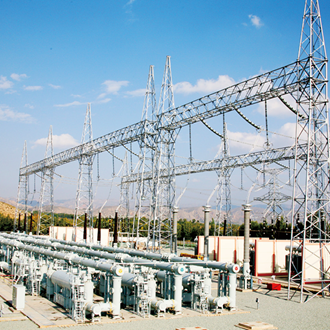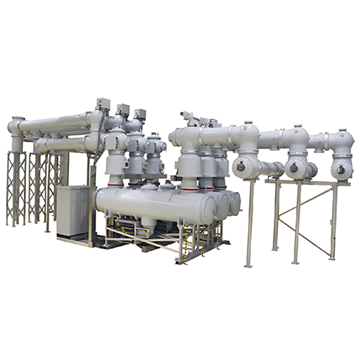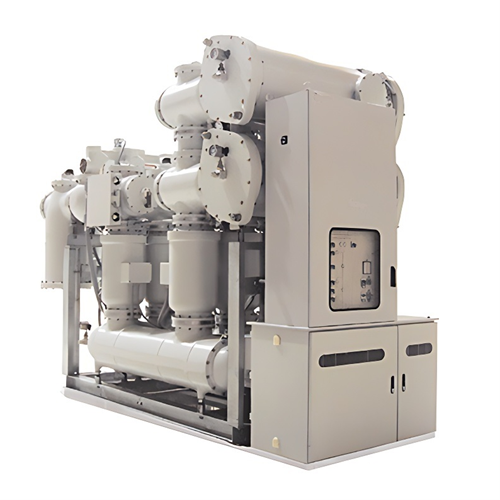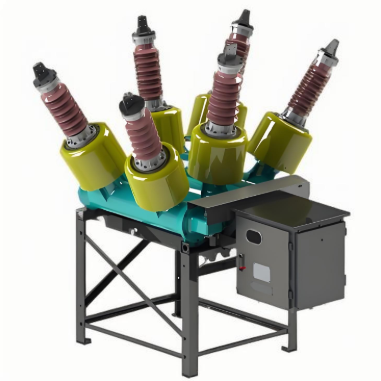High - Altitude High - Voltage Gas - Insulated Switchgear (HV GIS) Solutions: A Case Study of Vietnam - HV GIS in Challenging Terrains

Ⅰ. Project Background
Vietnam’s terrain is highly complex, with altitudes in the northwest and Central Highlands regions often exceeding 1,000 meters. These areas face harsh climatic conditions, including:
- Persistent high humidity (average 95%);
- Extreme diurnal temperature fluctuations (up to 32K);
- Salt fog corrosion.
With Vietnam’s rapid economic growth (GDP growth projected at 6.8% by 2025), electricity demand has surged. Key challenges include:
- Traditional air-insulated switchgear (AIS) in high-altitude regions is prone to environmental degradation, leading to reduced insulation performance and high maintenance costs;
- The Vietnamese government’s push for renewable energy projects (e.g., solar and wind power) requires highly reliable power transmission and distribution equipment.
Against this backdrop, High Voltage Gas Insulated Switchgear (HV GIS) — known for its compact design, strong environmental resilience, and long-term maintenance-free characteristics — has become the core solution for upgrading power infrastructure in Vietnam’s high-altitude regions. Its excellent performance in harsh environments makes it the ideal choice for addressing regional challenges.
II. Solution
- Equipment Selection and Technical Optimization
- Weather-Resistant Design: High-voltage gas-insulated switchgear (HV GIS) employs SF6 gas insulation, rated for 24–252 kV, and adapts to altitudes ≤3,000 meters and temperatures from -40°C to +55°C. Gas density compensation devices are added to offset SF6 insulation strength loss caused by low atmospheric pressure at high altitudes.
- Moisture Prevention and Sealing: HV GIS integrates multi-layer sealing systems and desiccant adsorption devices to prevent moisture ingress in high-humidity environments, ensuring gas chamber dew points ≤-40°C. Corrosion-resistant coatings (e.g., galvanization) protect against salt fog.
- Material Innovation: High-voltage gas-insulated switchgear (HV GIS) components utilize domestically produced polytetrafluoroethylene (PTFE) nozzle materials with breakdown strength ≥30 kV/mm. Their arc ablation resistance approaches that of imported materials while reducing costs by 30%.
- Smart Monitoring and Maintenance
- Real-Time Condition Monitoring: HV GIS systems integrate temperature/humidity sensors, pressure sensors, and partial discharge monitoring modules. Combined with Beidou Positioning System, cloud-based data transmission and anomaly alerts are enabled.
- Predictive Maintenance: For high-voltage gas-insulated switchgear (HV GIS), machine learning analyzes historical climate and failure data to optimize maintenance cycles (e.g., intensified seal inspections before monsoon seasons), minimizing unplanned downtime.
- Localized Adaptation and Installation Control
- Terrain-Specific Planning: HV GIS deployment leverages GIS technology to integrate Vietnam’s high-resolution altitude maps and meteorological data, simulating microclimate features (e.g., wind speed, condensation risks) at installation sites for optimized layout.
- Safety and Efficiency in Construction: High-voltage gas-insulated switchgear (HV GIS) installations adopt modular techniques to shorten construction timelines in high-altitude areas. Workers are equipped with altitude sickness monitoring devices to ensure safety.
III. Achievements
- Enhanced Reliability
- HV GIS equipment insulation compliance rates improved to 99.5%. At altitudes above 2,000 meters, AC Withstand Voltage (ACWV) and Impulse Withstand Voltage (IWV) increased by 40% compared to traditional AIS.
- High-voltage gas-insulated switchgear (HV GIS) failure rates dropped by 60%, resolving issues such as false classification of rice paddies as submerged vegetation and misidentification of aquaculture zones in other GIS products.
- Economic Benefits
- HV GIS footprint reductions of 70% save land costs, while extended maintenance cycles (10 years) lower upkeep costs by 50%.
- High-voltage gas-insulated switchgear (HV GIS) supports renewable energy grid integration, boosting annual solar and wind power generation by 15%.
- Environmental and Social Impact
- HV GIS achieves SF6 leakage rates <0.1%/year, cutting greenhouse gas emissions in line with Vietnam’s National Energy Transition Roadmap.
- High-voltage gas-insulated switchgear (HV GIS) provides stable power to remote high-altitude regions, improving livelihoods and promoting balanced regional economic development.













